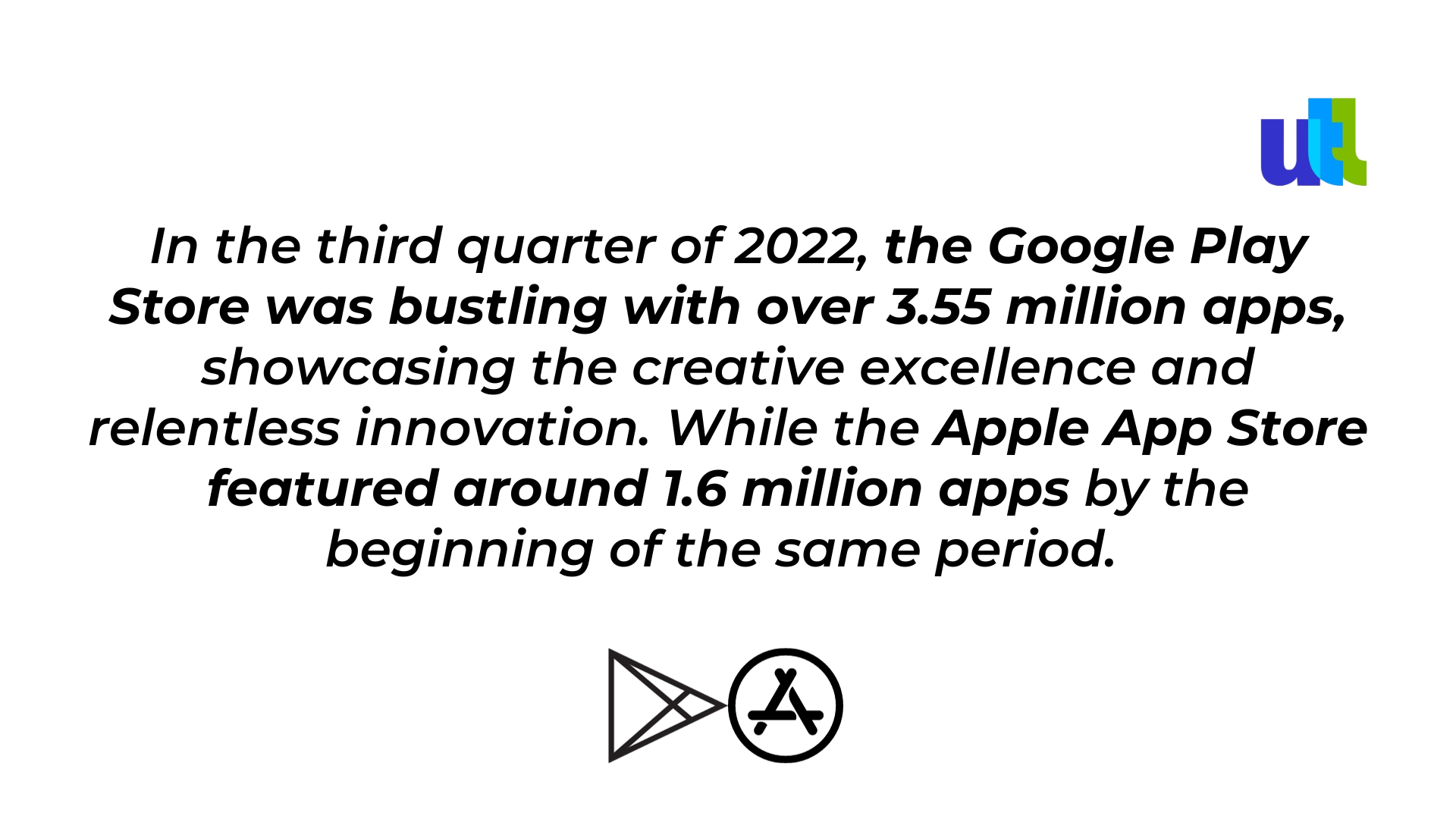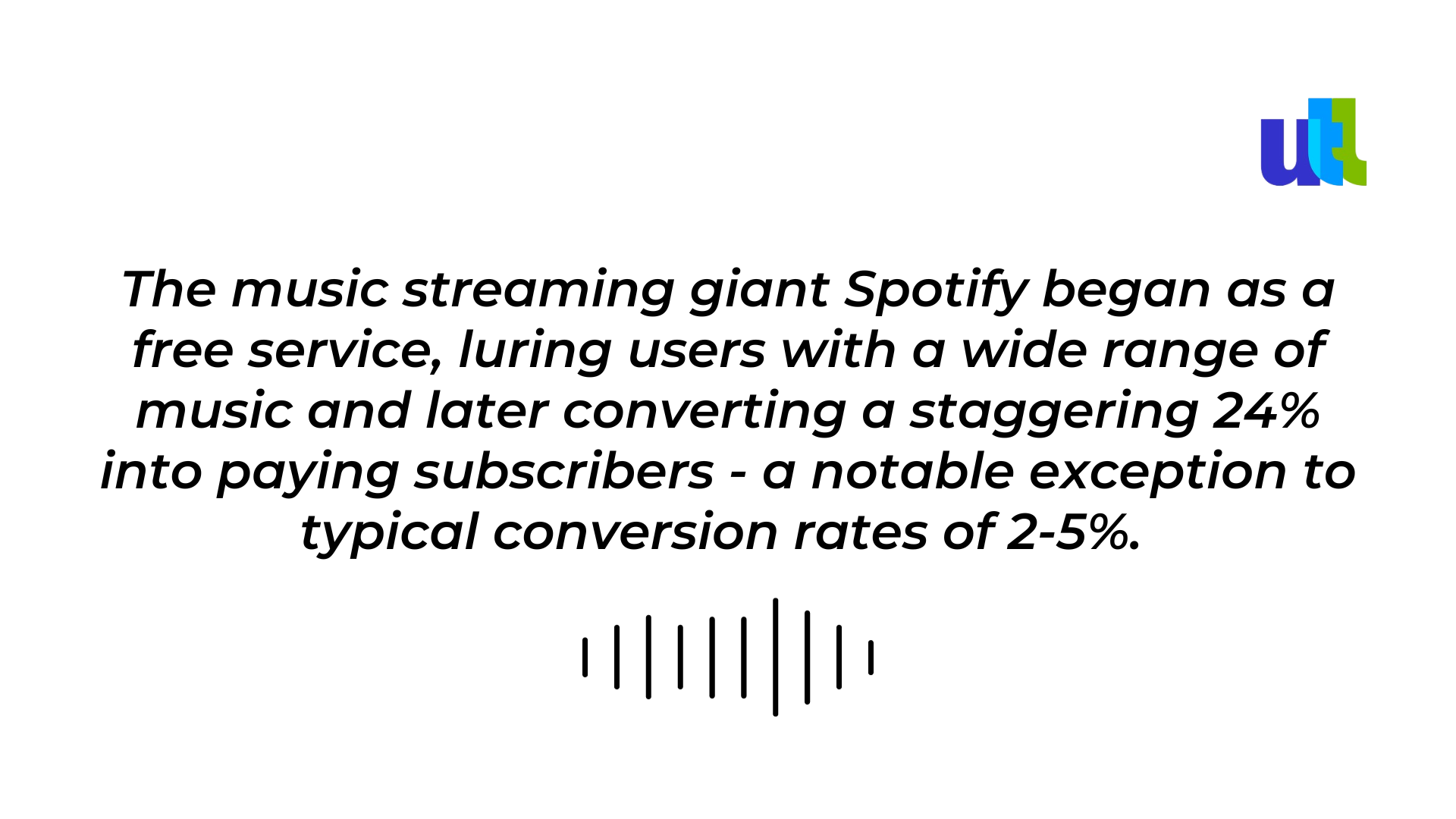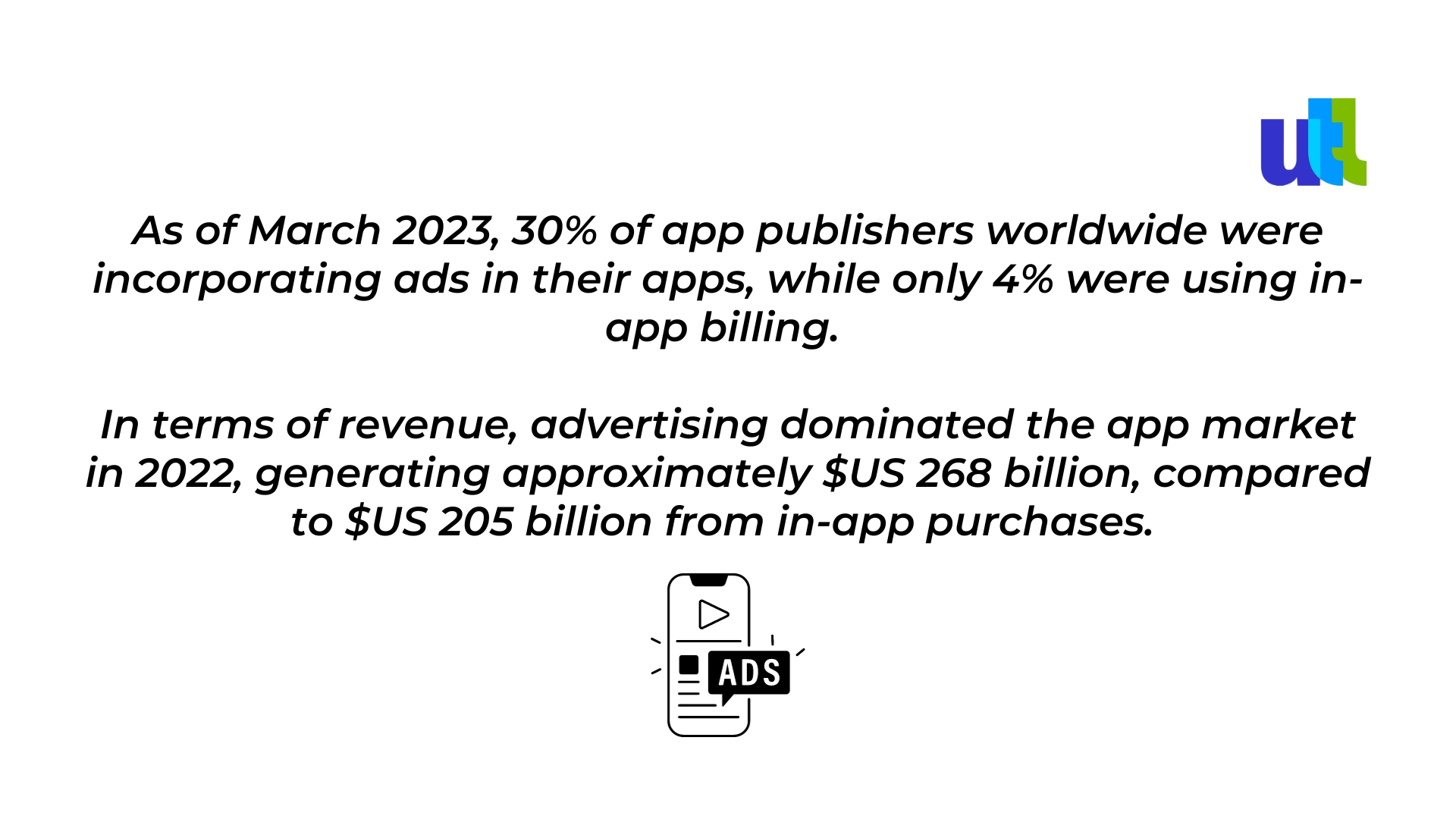In the dynamic and competitive landscape of mobile applications, making your mark requires a blend of creative strategy and precise execution.

These numbers, however, are subject to change as both Google and Apple routinely remove their stores of low-quality offerings to maintain high standards for their users.
For entrepreneurs and business leaders venturing into the digital realm, a critical question arises: "Is developing a mobile app worth the effort and resources?". Concerns about standing out, engaging users effectively, and driving revenue are at the forefront of this debate. Success in the mobile app sector goes beyond just building an app; it hinges on a deep comprehension of your target audience and their behaviors. It's about harmonizing your app's functionalities and revenue generation strategies with the actual needs and preferences of your users.
Whether it’s crafting a monetization strategy or enhancing the user experience, our blog post is designed to empower you with the insights you need to thrive in the ever-evolving universe of mobile app development.
What Is Monetization for Mobile Apps?
Monetization in the realm of mobile apps is fundamentally about turning your app into a revenue-generating tool. This becomes increasingly important when we consider the modern app ecosystem's preference for free downloads. Today's users, whether they're gamers or news readers, often balk at the idea of paying upfront for an app. This shift has necessitated a creative rethinking among developers about how to earn from their apps while keeping them free at the point of download.
While many of you keep considering whether it is necessary to monetize apps, keep in mind that monetization isn't just an afterthought; it's an essential component of your app's lifecycle. Without a clear, effective monetization strategy, an app can quickly become a financial sinkhole, unable to recoup the investments of time, money, and resources poured into its creation. Considering the multi-billion dollar stature of the app market, with revenue projections skyrocketing, overlooking monetization isn't just an oversight—it's a missed opportunity.
According to a July 2021 Statista report, a staggering 96.9% of mobile app downloads on Google Play and 93.4% on the Apple App Store were free. In contrast, paid app downloads comprised just 3.1% for Android and 6.6% for Apple apps.
Methods for Making Money with an App
When it comes to translating user engagement into revenue, there's no one-size-fits-all solution. The most impactful monetization strategy for your app will depend on understanding your users and aligning your app's features with their preferences and behaviors.
To aid in this process, let's explore some of the most effective monetization strategies, which broadly fall into two categories:
Direct Monetization Strategies
Freemium Subscription Model
The Freemium model stands out as one of the most dynamic app monetization strategies in the mobile app sphere. By offering a core-functionality version of the app for free, developers attract a broad user base. They then entice users to pay for access to premium features or content. The effectiveness of this approach lies in the 'Try Before You Buy' concept, which reduces initial barriers for users and provides a taste of the app's potential.
For a successful freemium model, balance is crucial. An overly restricted free version might deter users, while too generous an offering can limit premium upgrades. Upgrades should feel natural, adding significant value to the user experience.
Premium Apps
Distinct from freemium, Premium Apps require a one-time payment upon download. They tend to have higher engagement and loyalty levels due to the initial investment made by the users.
Paid App Downloads
Another direct monetization route is through paid downloads. Users pay a one-time fee to download the app. This approach is best for apps with a strong value proposition or unique features.
Case Study: Spotify's Freemium Success
Spotify's implementation of the freemium model showcases its potential when executed correctly.

Spotify's strategy of offering premium features like an ad-free experience for a subscription fee is a testament to the power of carefully balanced freemium models.
In mobile app development, choosing the right monetization strategy is as crucial as the app’s design and functionality. Each model offers its unique advantages and challenges, and the choice largely depends on the app’s nature, target audience, and the overall user experience you aim to deliver. The key is to align your monetization strategy with user expectations and app functionality, ensuring a seamless, value-added experience for your users.
Indirect Monetization
Indirect monetization is a strategic approach commonly utilized in software products, particularly effective for independent digital offerings that accompany a free application. This model diverges from direct monetization, prioritizing the primary product or service over the app itself, thus generating revenue independently of the app's direct usage. The primary goal is to enhance the product's appeal and user experience through the complementary application.
In-App Advertising Model
In-app advertising is arguably the most prevalent and straightforward monetization model. Here, advertisements are strategically integrated within the app, generating revenue based on user interactions and impressions. The key to optimizing earnings through this model lies in ensuring ad relevance, non-invasiveness, and utility, thus preserving and enhancing user experience.
In-App Purchases Model
Another key indirect monetization strategy involves in-app purchases, particularly pivotal in gaming apps. This approach allows users to buy virtual items or features, adding a revenue stream while enhancing user engagement and loyalty.
Product Enhancements
Lastly, indirect monetization can also occur through product enhancements. This strategy revolves around offering a free mobile app as a value-added service to the main product, thereby creating a competitive edge and fostering user loyalty.
Each of these strategies exemplifies how indirect monetization can be effectively utilized in software and app development, turning user engagement and experience into profitable ventures.
Picking the best monetization model for your App. 8 Essential Tips
Selecting the most suitable monetization model for your mobile app is a pivotal decision that can significantly influence its success. This choice should be made by meticulously analyzing various factors that align with your app's nature, audience, and market dynamics. Here are key considerations to guide you in making this crucial decision:
1. Understand Your Audience: The first step in choosing the right monetization strategy is understanding who your users are. Different demographics and user behaviors may favor different types of monetization. For instance, younger audiences might be more receptive to in-app purchases in gaming apps, while older users might prefer subscription models for their predictability and perceived value.
2. Assess the App's Purpose and Functionality: The nature of your app plays a critical role in determining the best monetization strategy. For utility apps, a one-time purchase or subscription model might be more suitable, whereas for gaming apps, in-app purchases and advertising could be more effective.
3. Analyze the Competition: Look at similar apps in your category. What monetization strategies are they using, and how successful are they? This can give you insights into what might work for your app, considering you’re targeting a similar audience.
4. Experiment and Optimize: The mobile app landscape is dynamic, so it's essential to be flexible and adaptive with your monetization strategy. Test different models, analyze the results, and iterate. For example, start with in-app ads and measure user engagement and revenue, then experiment with adding an in-app purchase for additional features or an ad-free experience.
5. Balance Revenue and User Experience: While monetization is important, it shouldn't come at the cost of user experience. Intrusive ads, for example, might generate immediate revenue but can harm long-term user retention. Striking the right balance between earning revenue and maintaining a positive user experience is key.
6. Consider Market Trends and Platform Norms: Trends in app monetization can vary across platforms (iOS vs. Android) and regions. Subscription models might be more prevalent and successful in some areas, while ad-supported models could work better in others. Stay updated on the latest trends and platform guidelines to make informed decisions.
7. Leverage Analytics and User Feedback: Use in-app analytics to track how users interact with your app and monetization features. User feedback can also provide valuable insights into how well your monetization strategy is being received and what improvements are needed.
8. Keep It Simple and Transparent: Whatever monetization strategy you choose, ensure it's easy for users to understand and engage with. If your app uses in-app purchases or subscriptions, clearly explain the benefits and terms. Transparency builds trust and can lead to better conversion rates.
By carefully considering these aspects and continually refining your approach based on performance data and user feedback, you can select and optimize a monetization strategy that aligns with your app's goals and your users' preferences.
What’s in the future for App Monetization?
Mobile applications have permeated every industry, from banking and gaming to dating and finance, with downloads reaching an astonishing 255 billion in 2022.
The primary goal of developing mobile apps is to generate revenue, and while implementing monetization strategies isn't challenging today, continuous innovation is vital due to escalating competition. In-app advertising remains the favored method for monetization, especially in the global and US markets.

Looking at the global mobile app revenue from 2019 to 2027, a notable surge is expected, peaking in 2027. Predictions indicate that revenue will reach its zenith across 21 different sectors by the end of this period, potentially hitting an all-time high of $US 352.1 million.
Final Thoughts
In conclusion, navigating the complexities of mobile app monetization requires a nuanced and informed approach. This guide has aimed to simplify that process, providing you with key strategies and insights. Remember, successful monetization hinges not only on revenue generation but also on maintaining a high-quality user experience.
Ultimately, there's no universal strategy that fits every mobile app; your monetization approach must be tailored to your app’s unique context, audience, and the specific platform it inhabits. Be mindful of the balance between monetization and user experience – overly aggressive advertising can repel users. Additionally, it’s crucial to align your strategies with the specific policies and nuances of platforms like Apple’s App Store and Google Play. For personalized advice and direction, consider reaching out to expert consultants of Utah Tech Labs, who can guide you to achieve your business objectives with precision.
For free consultation on the free and paid app, click here.
----------------------------------------------------------------------------------------------
View the full presentation:
WRITTEN BY
Milda Butkeviciute
2023-11-02
































































































































































































